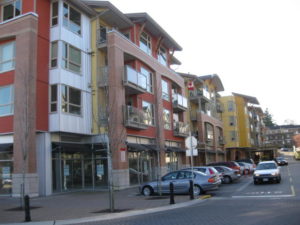Sustainability is widely understood to have 3 pillars – environmental, social and economic. The ‘environmental’ pillar has received the most attention over the past 25 years but a new element of the social dimension has now descended on us – “housing.” In our enthusiasm to reduce climate emissions and greenfield development, many cities have significantly constrained the available land supply for new housing, focusing instead on infill. While this is laudable, the unique ways that politics and policy have interacted has resulted in home builders having to pay significantly higher costs for urban infill land – which has driven up the cost of housing.
In the 1990s, the sustainable development movement emerged and came to dominate the planning discussion for the next 15 years. The majority of the sustainability discussion focused on the environment, even though it professed to address social and economic considerations as well. Many of the environmental issues are now addressed in planning and development policies and regulations– explicitly and implicitly including: Densification and mixed uses and complete communities are the norm for planning policy, active transportation is a high priority everywhere, many cities have climate change plans, the building code now mandates high levels of energy efficiency, water conservation is the norm, recycling is the norm, environmental area preservation is required, many cities have food strategies, and many others. While we can all do better on all of these areas, we have come a long way.
Housing costs are new the new serious threat to the sustainability of many communities. Many Canadian cities are now entirely unaffordable to its current residents, and that impact on future generations is incalculable. Housing costs may destroy many communities that are currently enjoying the illusion of success. As such, for the next decades, housing affordability and its core role in maintaining the social and economic health of communities is “the new sustainability.”
Some of our “greenest” cities are also our most unaffordable – eg: Vancouver.
There are many serious implications of high housing prices including: Removing the ability of many to afford housing in high priced urban centres, creating significant difficulty for companies to attract staff at all levels, and thereby to thrive and offer many services; creating many unintended social consequences as the majority of income has to be allocated to housing; and homelessness, as well as many others.
It is imperative that planners figure out how to meet sustainable city objectives without pricing the housing in our cities out of reach of the the next generation, as well as many of these generations – and we have to do so within a market context as it is impossible for governments to supply enough social housing to offset the market imbalances, or to supply massive urban transit systems to service suburbs far from urban job centres. What we have been doing is not working – we need new ideas, new concepts, an open mind to work with all stakeholders, and some serious commitment to action within the planning profession.
